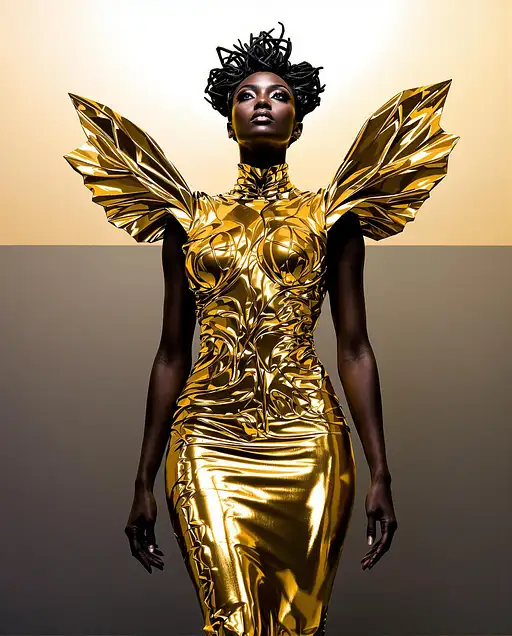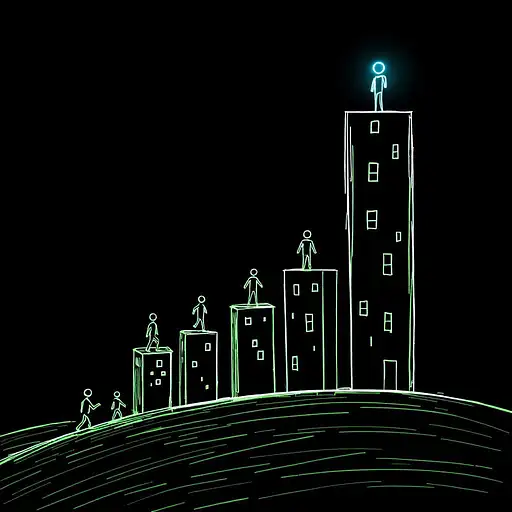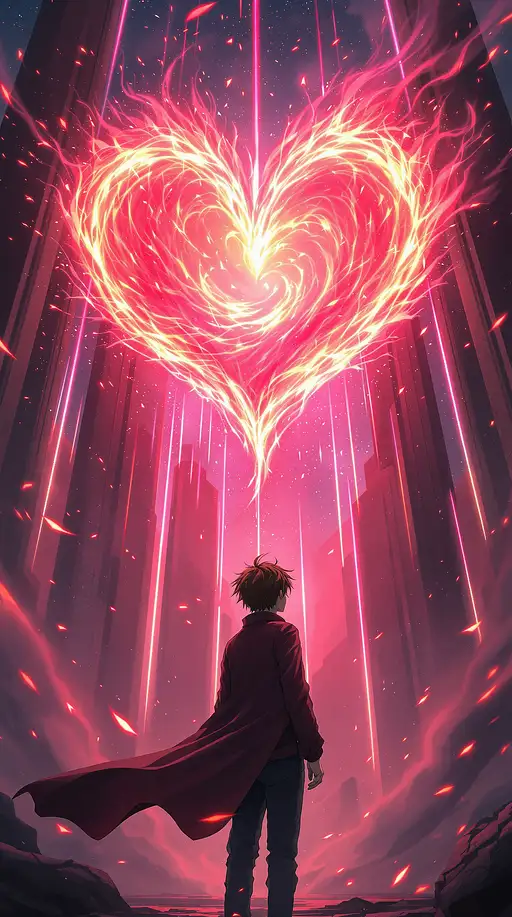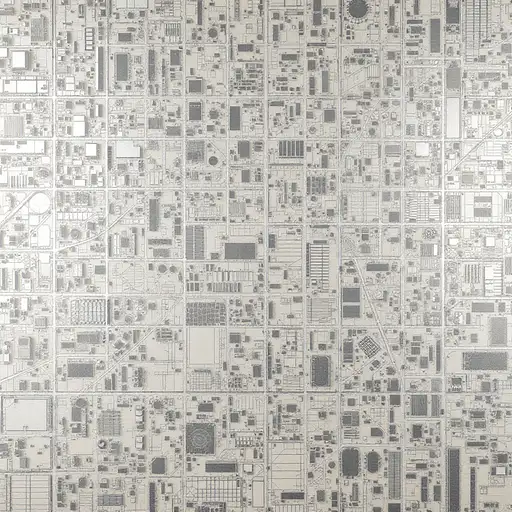
5 months ago
This image is an abstract portrait of an African female face formed by flowing blue and gold swirling patterns, suggesting a connection between human form and natural elements. The main subject of the image is a large, abstract depiction of an African female face in profile, looking to the left. The face is not rendered traditionally but is formed from sweeping, fluid shapes in various shades of blue. These shapes are reminiscent of swirling water or wind. There are elements of gold interspersed within the blue, appearing as glittering specks and more defined, root-like structures. The face is centered and occupies a significant portion of the frame. To the left of the face, there are lighter, white-grey shapes that also have a fluid, cloudy appearance. These elements contribute to the overall ethereal and dynamic feel of the image. There are no distinct, recognizable objects or animals present, only these abstract forms that collectively create the impression of a face and a turbulent, swirling environment. The atmosphere is one of dynamism and fluidity, with a sense of movement and transformation. The mood is mystical and introspective, evoking feelings of wonder and the interconnectedness of life and nature. The colors, predominantly shades of blue and gold, contribute to a feeling of depth and richness.























